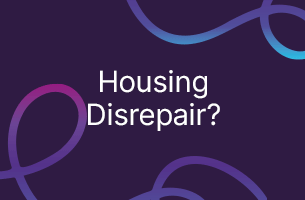Posted by Michael Lewis, chief executive of Legal Futures Associate Claim Technology

Lewis: Timeliness targets may not be the best way to judge insurers
Last week I attended the MIB’s whiplash reforms integration workshop in London. All credit to the MIB – I was impressed by its project team’s delivery of a thoughtful technology solution in time for 6 April (notwithstanding the obvious difficulties in doing so without the final version of the new Civil Procedure Rules).
I was particularly impressed by the team’s openness and honesty in answering some great questions from attendees, and a hitch-free technology walk-through of the direct claimant experience and the public experience APIs.
It was clear that the new portal for claimants is both well-designed and accessible based on extensive focus group testing and that the same design would be used for claimant representatives to manually re-input claims.
One of the MIB’s reveals at the London workshop was that it would take 40 minutes to process a claim. In the Manchester workshop, the figure communicated was up to 60 minutes.
At a time when costs no longer apply, the prospect of more manual re-keying for claimant law firms is a double-whammy (shameless plug – early tests of Claim Technology’s claims-as-a-service platform showed that it was possible to reduce the claimant’s full onboarding process to less than six minutes. This was achieved without the need for the claimant law firm to manually re-key data into the new MIB portal website).
Time spent processing claims may not be the only issue. In fact, the MIB’s good design and user testing may not be enough to provide claimants with a viable solution to pursue their claim given what we already know about the rules:
- Claimants will need to make an educated guess on whether their claim is likely to be under the limit or not. If their claim happens to move beyond £5,000, the insurer can reject the claim and the claimant would have to start a fast track claim from scratch;
- Claimants can’t include either credit repair, credit hire or rehabilitation costs as part of their claim (how will they claim this?);
- Claimants can’t switch mid-way to using a claimant law firm without stopping and starting again from scratch, although they can download a copy of the original CNF;
- Some claimants will need to start again from scratch if they need to switch from one claimant law firm to another;
- Claimants cannot enter their bank or card details via the official website. Assuming that there will be a contact number for the insurer, claimants can look forward to receiving a cheque via snail mail (or maybe multiple cheques given that there are no duplication checks. Insurers – caveat vendor!);
- At the end of the claim, claimants are asked to acknowledge that ‘this offer is in full and final settlement’ of their claim. What about their credit repair, hire and rehab claim?
- The rules aren’t clear on what will happen if a claimant does stop and start again, and who would bear the cost of a second medical report. Whilst the MIB have taken this question away to consider, I would have assumed that the original could simply be downloaded and re-used; and
- The rules also haven’t been clarified on what mechanism will prevent insurers from behaving badly, although the technology has been developed to support the concept of target dates.
A quick look at the represented claimant model
As it stands, claimant representatives and compensators have a mutual interest in a separation of concerns, in reaching agreement piecemeal and as early as possible. However, the MIB’s new model conflates issues of liability and quantum.
This means that, where liability is only partially admitted, these are resolved only at the end of the claim. Granted, the MIB’s assumption was these are small claims, but in practice, this will lead to more uncertainty and higher operational costs for all concerned.
Given the above, where liability is partially admitted, it is much more unlikely that compensators will agree to the request for an interim payment. Access to justice continues to be an issue even where the claimant is represented.
Whereas now a claimant representative would submit losses over time, the MIB’s assumption for the new portal is that claimant representative must have gathered all losses before they submit the accompanying medical report with quantum. This will reduce transparency on ongoing losses, and lead to higher indemnity costs for compensators.
Claimants are going to need more support, but where will this come from?
For all of these reasons, I would urge the MIB:
- To make these points clear on the official website before the claimant starts the process;
- To point the claimant in the direction of a law firm that can help (if there are any left); and
- To make the claimant aware that ‘going it alone’ may lead to them claiming less compensation than they are entitled to, either by not being fully familiar with the rules or by being at an obvious disadvantage against big business whose financial interests are at odds to their own.
I would also urge the MIB to think not in terms of target dates and holding insurers to those dates. Instead why not take a leaf out of the Israeli regulator’s book and have a public webpage ranking the insurers on the percentage of claims that are accepted, the percentage rejected, and the speed with which insurers deal with the claim?
This provides a target, but with the advantage of everyone rising to the best possible standard, not falling to the minimum level defined by the rules. I, for one, would be looking at this table when it comes to renewing my motor insurance.
I also wanted to share my observations around the small claims track technology, which will be of interest to operations teams too.
Understanding Pega
The small claims track portal has been built on Pega. Pega is a modern case management platform built on top of a business process management (BPM) framework. It was precisely this approach I advocated the legal industry adopt in-house prior to Irwin Mitchell adopting Pega in 2014 – which at the time everyone thought was bonkers (and no doubt still do).
It was, however, a canny insight into how to solve many of the issues plaguing law firms using workflow solutions offered by traditional case management vendors. Not sure of the difference? I’m happy to chat over coffee – message me at michael.lewis@claimtechnology.co.uk.
Limitations of the technology: Manual processes are a waste of time
However, I can’t help but feel a sense of frustration that the small claims track API integration layer is distinctly un-modern. The use of traditional and wasteful ‘polling’ methods will be familiar to anyone who has integrated with the fast-track portal, but feels dated given the already ubiquitous use of webhooks and serverless architectures.
With the fast-track portal likely to be migrated to the small claims technology architecture at some point in the medium-term (after all, why would the industry pay for two separate technology solutions?), this feels like a wasted opportunity and one which the industry will be saddled with for many years to come.
The MIB also revealed that it has planned on the basis that API users will poll the service twice a day. This is a serious mis-calculation.
The MIB said the principle of the claim being with either the claimant representative or compensator, but not both at the same time, is now broken. For example (and this is one of many I noted), where the compensator is considering whether to make a full offer, there is nothing stopping the claimant representative from simultaneously requesting an interim payment. If this is the case, wouldn’t I need to make an API request to the MIB every time the claim is opened in my case management system in order to ensure that the claim data is fully up to date?
It was also a shame that the MIB boasted of an impressive identity management module, but never thought about support for single sign-on.
Instead of fee-earners being able to view and interact with the MIB portal website from the convenience of their case management system, they will be forced to come out of their case management system, log onto the MIB portal, manually re-key data and then come back to their case management system. API integration will help here, but not completely remove manual touches.
Specific insight into the MIB technology
In relation to MedCo, as expected the existing process will continue for claimant representatives. They will need to log into MedCo, choose a supplier from a randomised list, confirm to MedCo which supplier they intend to use and then outside of MedCo instruct them. Claim Technology’s claims-as-a-service platform uses RTA and supply chain APIs to automate this process from start to finish.
A nice surprise was the way that the MIB has designed the new small claims portal service to identify the compensator(s). There will be no need to do an AskMID check, which means I can look forward to retiring the code I developed to automate this.
What wasn’t clear to me was how the claimant representative would be notified of a change in compensator(s) by the MIB. The process flow/specifications didn’t seem to cover this, but on reflection my view is that this isn’t an issue and I will monitor the compensator(s) from the ‘get claim details’ method.
Unfortunately there were no similar surprises re CUE PI. It is clear that claimant representatives will need to continue to do a CUE PI check outside of the system and key the CUE PI reference into the new portal (so my CUE PI automation tool will continue to be of value).
And whilst compensators will be able to validate the CUE PI reference provided via a claimant representative, it isn’t clear as to whether the MIB will be undertaking a CUE PI check for litigants in person.
Reading between the lines, the answer is no. Will insurers need to run the CUE PI check now? What’s your view? Let me know in the comments.
What about counter-fraud in general?
The MIB has always been clear that any counter-fraud capability is beyond the scope it was given by the Ministry of Justice, hence why Claim Technology is working with both Synectics Solutions and BAE Systems to help insurers with this challenge.
Whilst the government is expecting the number of claims to go down in the new regime, it is quite possible that the inverse will be true – that insurers will see more claims, more dubious claims, and more crime-based claims coming their way. Say what you like about claimant solicitors, insurers recognise that they provided a useful filter. Filter no more.
As we get closer to the reforms, we can expect more and more information to be released in terms of process, technology, and response from the insurance and legal communities.
E-mail us at hello@claimtechnology.co.uk if you would like to subscribe to our MIB updates.









Leave a Comment